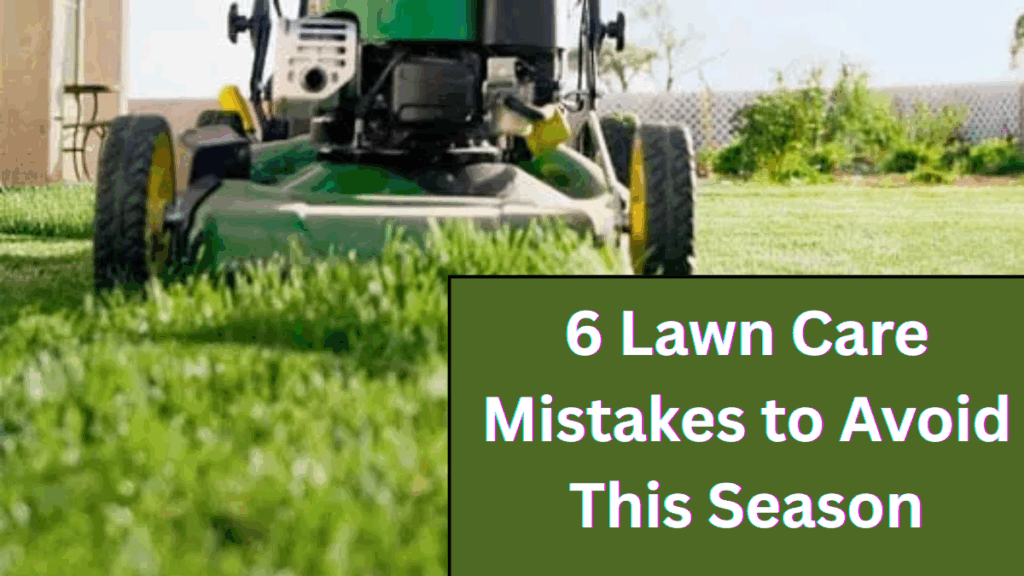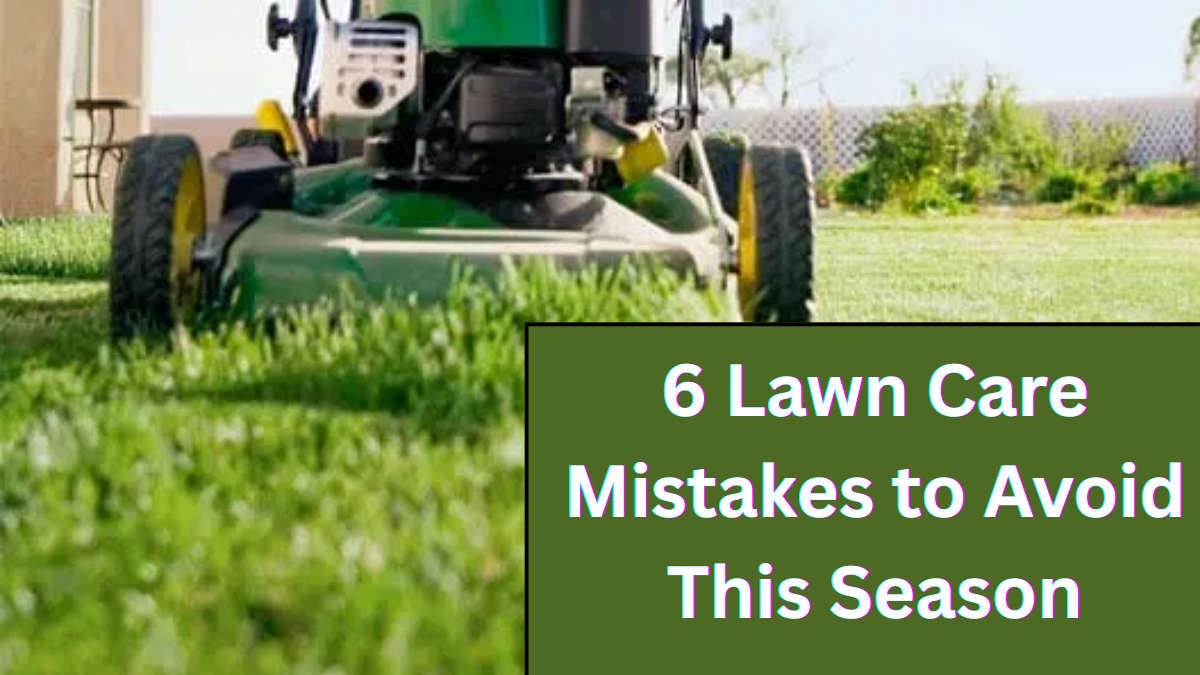Taking care of your lawn is not just about making it look green—it’s about keeping it healthy year-round. Many homeowners unknowingly make simple errors that harm their grass, especially during seasonal changes. With the right fall lawn tips and care, you can avoid common issues and keep your yard thriving.
Here’s a look at 6 lawn care mistakes to avoid and how you can fix them.

Overwatering the Lawn
Why it’s a mistake
-
Overwatering suffocates roots
-
Creates ideal conditions for pests and fungus
-
Wastes water without improving lawn health
What to do instead
-
Water deeply but less often
-
Stick to early mornings to reduce evaporation
-
Aim for about 1 inch of water per week, including rainfall
Fertilizer Burn
Why it’s a mistake
-
High salt content in fertilizers dehydrates grass
-
Leads to brown or yellow spots
What to do instead
-
Always follow label instructions
-
Use slow-release fertilizers
-
Water the lawn lightly after application to wash nutrients into the soil
Mowing Mistakes
Why it’s a mistake
-
Cutting grass too short weakens roots
-
Dull mower blades tear grass instead of cutting cleanly
What to do instead
-
Follow the “one-third rule”: never cut more than one-third of the blade’s height
-
Sharpen mower blades regularly
-
Adjust mowing height seasonally for healthier grass
Ignoring Thatch
Why it’s a mistake
-
Prevents water, nutrients, and air from reaching soil
-
Encourages pests and diseases
What to do instead
-
Aerate the lawn to break down thatch
-
Dethatch once a year if buildup is more than ½ inch
Soil Compaction
Why it’s a mistake
-
Reduces oxygen flow to roots
-
Restricts water absorption
-
Creates weak, patchy grass
What to do instead
-
Core aerate your lawn in the fall
-
Rotate play and traffic areas to minimize wear
-
Add compost to improve soil structure
Skipping Seasonal Lawn Care
Why it’s a mistake
-
Grass won’t be prepared for temperature changes
-
Weakens the lawn before winter dormancy
What to do instead (Fall Lawn Tips)
-
Rake leaves regularly to avoid suffocation
-
Apply fall fertilizer for root growth
-
Overseed bare spots to strengthen your turf
Quick Comparison: Common Lawn Problems & Fixes
| Mistake | Problem Caused | What to Do Instead |
|---|---|---|
| Overwatering | Root rot, fungus growth | Water less frequently, early mornings |
| Fertilizer Burn | Yellow/brown patches | Use slow-release fertilizer, water lightly |
| Mowing Mistakes | Weak, torn grass blades | Follow one-third rule, sharpen blades |
| Thatch Buildup | Blocks nutrients and water | Aerate or dethatch annually |
| Soil Compaction | Poor water/oxygen absorption | Core aerate, add compost |
| Skipping Fall Prep | Weak lawn in winter | Fertilize, rake, overseed |
Final Thoughts
Your lawn doesn’t need guesswork—it needs consistent care and the right practices. By learning about lawn care mistakes to avoid and using the right fall lawn tips, you can enjoy a healthier, greener yard all season long.
FAQs
Q1. How often should I water my lawn in fall?
It’s best to water once or twice a week, depending on rainfall. Avoid overwatering to prevent fungus and root damage.
Q2. What’s the best way to prevent fertilizer burn?
Always measure carefully, use slow-release fertilizer, and water lightly afterward to protect your lawn.
Q3. How can I tell if my soil is compacted?
If water pools on the surface or grass looks weak despite regular care, your soil may be compacted. Aeration helps fix this issue.
Q4. Is mowing less in fall a good idea?
Yes, but don’t stop completely. Keep mowing at the recommended height until grass growth slows down, following proper mowing tips.
Click here to learn more
